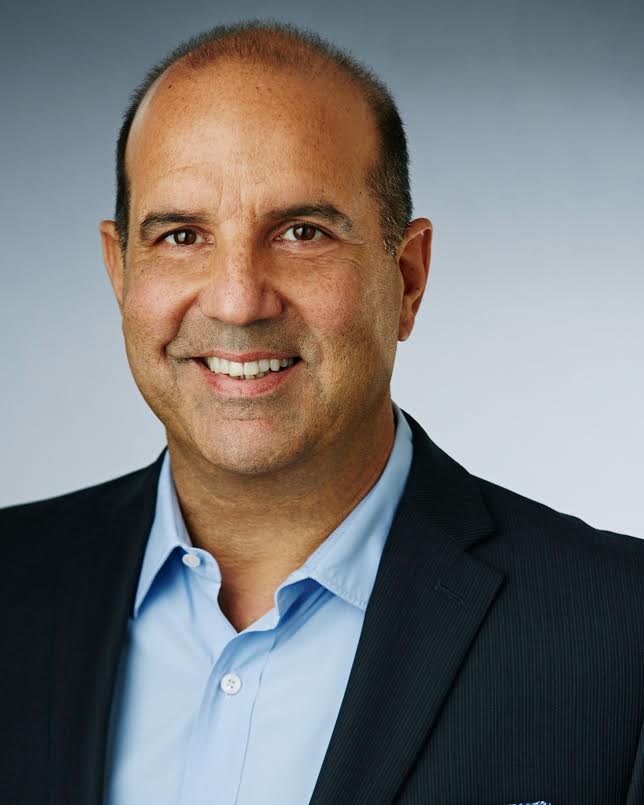The Mortgage Industry’s Future is Here

Mortgage transactions will eventually be an entirely paperless, digital process and more than likely started and finished on a mobile device. Consumers are demanding it. The technology exists. Obviously this is a more sophisticated transaction than ordering takeout, but we’re on the cusp of being able to offer it. How well a mortgage company adapts to this rapidly approaching reality means the difference between moving forward as a standout or being forgotten in the past.
The mortgage industry needs a plan to support this full-service, online borrowing experience. Some early adopters already do, which is a good sign for an industry that has always been paper-heavy and slow to adopt new technology. The corners of the real estate industry that have been most progressive in many cases innovated out of necessity during the credit crisis, creating a “silver lining” out of the housing meltdown now that we’re a few years removed from the most challenging days. Technology showed that more transactions could be closed, and closed faster with better regulatory compliance. There hasn’t been a lull of services and solutions introduced since. We’re not as desperate to overcome the issues that brought us here, like servicing massive amounts of defaults or needing reliable platforms that keep the process transparent and in line with regulations. Instead, this new tectonic shift has rippled out from borrowers’ demand for convenience. And it is now being felt across the industry.
Moving in sync with the push for innovative technology is critical to offering an easier, more efficient home buying and selling experience for the consumer. Importantly, it has the added benefit of helping mortgage brokers want nothing more than more opportunities. A self-service platform where each transaction can be conducted from beginning to end today is a major differentiator, and in the very near future will be mandatory to remain competitive. Too many firms get fixated on the cost of investing in the technology, but taking a step back and evaluating the implications of not doing so will quickly reveal that the question is really, “How long can I get away without offering it?”… one year or two years? Maybe three years? Timing the market is a risky proposition for buying or selling a home, and the same applies to investing in critical technology to be competitive and soon relevant.
The right tools for the job
Self-servicing options start with online loan applications and can carry the borrower all the way through the closing process. In fact, the mortgage aspect of the process is but one piece of online real estate experience, and generally is behind other elements like shopping for a place. The entire homebuying process is being digitized: browsing for properties, taking virtual walk-throughs, applying for financing, closing financing, and a limitless menu of additional services that can be chosen along the way. Some are “nice” options that can be offered, such as letting agents and customers send immediate feedback on a property as they visit it. Others are absolutely necessary today, including allowing access to documents and accepting electronic signatures.
The mobile device is at the center of most technology initiatives. As timely connections and communication grow out of the need for better customer service and regulatory compliance, the mobile device is emerging as the tool allowing every participant in the process to communicate in real time. The ability to review and transmit documents at every stage is what keeps the process moving and moving in a direction that is more transparent and regulatory compliant.
Power to the people
By now we know the Millennial generation homebuyer is the poster child shaping the industry. This is the new borrower we are clamoring to work with. The Millennial generation expects us to deliver shorter timeframes and immediate, around the clock responses to questions. Service used to mean face-to-face interaction, but today requiring that is often seen as an inconvenience when much of the process can be completed online. Across the industry we are working on ways to make information readily available and delivered to whatever device they want to use. A competitive advantage doesn’t only begin there. This digitally-empowered generation of homebuyers may have demanded we meet them on their own terms and had us rethink the way we interact, but that recognition for simplicity has spread across generations. Gen Xers and Baby Boomers are increasingly interested in the convenience of digital solutions, and comfortable making large purchases online.
Baby steps for every generation
Mortgage companies today need to court the Millennials, but also listen to all borrowers and take steps toward creating self-servicing platforms for everyone. Attracting a new wave of borrowers and easing the concerns of those who will fill out second or third loan applications is going to take more work than having a flashy Web site. Our industry still requires a concerted effort to make the process as transparent as possible. Transparency transcends generations and other demographics and of course is a requirement in many aspects of the mortgage process. While other generations may not have the same expectations as Millennials, the integration of offerings such as advanced Web site designs and well-trained call center staff that comes with a push toward mobile and paperless options are going to be welcomed by all.
TRID won’t be an excuse for long
There is reluctance among brokerages that may seem overwhelmed by what is the easiest, lowest-risk place to start. These are brokerages that were constrained with extensive resources tied up in preparation of the October TILA-RESPA Integrated Disclosure (TRID) rule implementations. Introducing self-service options may have been pushed off everyone’s project list, but when the dust settles around TRID implementation, heading into the first quarter of 2016, finding the resources needs to happen sooner rather than later. It just may be TRID that sparks a firm’s move to technology.
For example, the rules call for accelerated timelines for taking action on documents, so we’re looking to reduce what had taken months into weeks or even days. We need ways to keep the acquisition and origination process moving around the clock. Online and mobile access to documentation and information is critical and really the only way to we’re all going to meet these new deadlines. A good self-servicing system keeps the operation running and with a clean, clear audit trail. We now have opportunity to store, retrieve and sort data in a way that we never could with paper.
The rise of the real estate tiger
Some firms have been able to build technology teams outside of those originating loans or working on compliance measures. Each organization should have a technology expert on staff. Reinventing the industry will take technology savvy, which is not a skillset found in every loan officer’s background. What leading firms are doing is building technology Tiger Teams with a single tech-driven mission. They are not relying on their rank and file to make technology and vendor partner decisions. They are removed from the tech team that makes sure compliance software works, and instead are dedicated to using technology to drive business, approaching technology with the objectives of a loan officer.
If building a dedicated tech team feels like too large of a leap, the next best thing is organizing a focus group of employees, vendors and even customers. This is a highly effective way to discern what technology is available relative to what each group needs. Teams can explore topics like how they want to receive and send information from each other. What initiatives are priorities for today, and what can wait until tomorrow?
Vendors should be able to provide a look at what has been done successfully already. There is an expanding foundation on which anyone can build a unique full-service solution. Of course the single most important starting point will be looking for solutions that are scalable, because inevitably technology will change as fast as the demands of customer. A digital strategy has to be focused on what people want now as well as what they’ll need in the future.
No time like the present
Not too long ago it seemed technology and the mortgage industry were very removed from one another. We accepted that each mortgage would be hundreds of sheets of paper and that we had to rely on postage stamps and office visits to complete a transaction. Coming out of the meltdown we made strides to improve borrower satisfaction and offer better process documentation. We became empowered to let technology handle more of the workload, and that in some cases it was better than we were. Along the way we discovered that technology gave us speed and accuracy. And in the near-term market, where originations may very well stay flat, the industry needs to be faster. Even if a mortgage servicer is reluctant to open up to a new, online direction, I don’t believe anyone would want to do less business. The sooner a firm closes a loan, they have lowered cost, and they are ready to originate the next loan. The customer is online and ready to help; they just need to be given the tools they need.

John Vella is chief revenue officer of Altisource Portfolio Solutions. He has worked in the real estate and mortgage industry for the past 30 years.
This article originally appeared in the October 2015 print edition of National Mortgage Professional Magazine.





